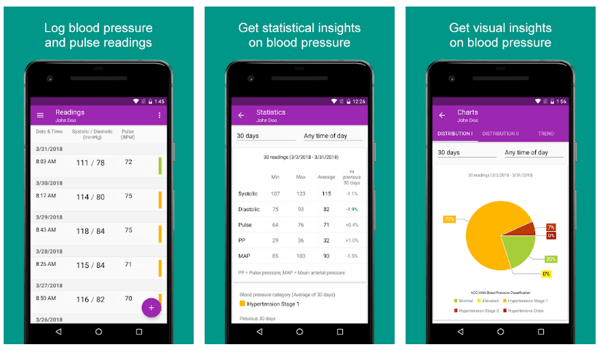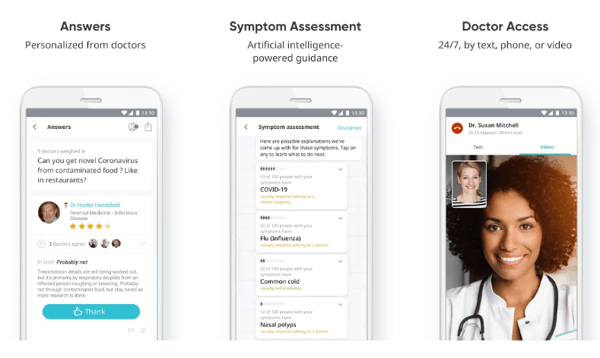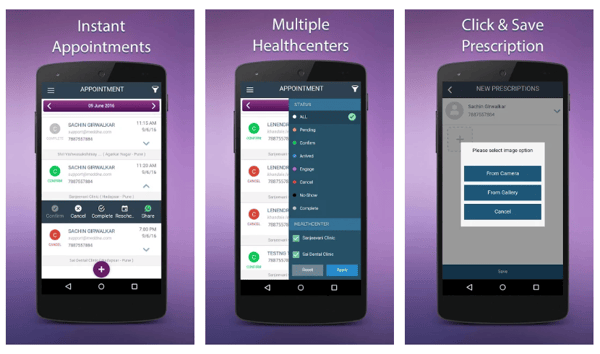The tsunami-like impact of the COVID-19 pandemic is expected to drive mass-scale social and economic changes for years to come. From a permanent shift in personal hygiene norms to a radical change in consumer purchasing behaviors, this crisis is changing our work patterns and leaving a lasting imprint on our lives.
Despite its disruptive and negative impact on the world’s populations, this virus is unintentionally acting as a catalyst for healthcare revolution. To promote social distancing and keeping communities safe, authorities and medical providers are speeding up the adoption of virtual healthcare services.
Five Types of Medical Apps for 24/7 Healthcare Support
As the demand for virtual healthcare services is growing, the mHealth market—currently estimated at $37 billion—continues to expand and attract new entrants. A safe alternative to face-to-face doctor’s visits, mobile health (mHealth) solutions are playing a pivotal role in coping with the ongoing outbreak.
There are over 400,000 health-related mobile apps available on the market. Most of them fall under one of the following categories:
1. Remote patient monitoring
Remote patient monitoring (RPM) apps allow medical providers to manage a patient’s health outside of the clinical setting. They work by collecting data from IoT sensors embedded in mobile devices (such as smartphones, fitness trackers, sleep trackers, smartwatches, wearable ECG monitors, etc.) to continuously monitor the user’s vitals.
Thanks to RPM apps, medical providers can review real-time and historical readings to get a holistic view
of a patient’s health. Advanced applications include features such as medication reminders and doctor alerts
in case patient readings are abnormal.
Examples: 100plus, Dexcom, ResMed
 BP Journal is an example of an RPM app that keeps logs of blood pressure and pulse readings
BP Journal is an example of an RPM app that keeps logs of blood pressure and pulse readings
2. Self-Diagnosis Mobile Tools
An estimated 40-75% of Americans check their symptoms online before consulting a specialist. This explains
an increasing interest in self-diagnosis mobile tools, which analyze patient symptoms and assess them against
a database of illnesses and conditions to come up with a possible diagnosis.
While digital symptom-checkers have many shortcomings and can't replace a doctor’s consultation, they can be useful as an adjunct to triage. These apps also encourage patients with severe conditions to consult a doctor. In the context of the COVID-19 spread, self-check apps help users assess whether their symptoms may indicate the disease.
Examples: Ada, Your.MD, Symptomate
 HealthTap provides AI-powered guidance on health symptoms and enables access to medical doctors if they need to be consulted
HealthTap provides AI-powered guidance on health symptoms and enables access to medical doctors if they need to be consulted
3. Clinical reference
Symptom checkers primarily serve patients. Conversely, clinical reference tools are dedicated to medical professionals, providing a source of knowledge and clinical support for doctors, nurses, and pharmacists.
Clinical reference databases collect information about diseases, health conditions, symptoms, drugs, side-effects, and procedures. In this way, they assist physicians and other healthcare specialists in their daily practice.
Examples: Medscape, Epocrates, Pepid

Prognosis is an attractive solution for practicing doctors, nurses, and medical students who want to hone their skills
4. Medical collaboration
Collaboration apps connect doctors, nurses, and other healthcare personnel and engage them in conversations and knowledge-sharing. By promoting the active participation of all medical professionals in patient care, these social media-like platforms help improve the diagnostic and treatment processes and enhance patient outcomes.
Using medical collaboration tools, healthcare workers can share their clinical cases with colleagues, participate in diagnostic conversations, and get access to rare cases and treatment methods. Some apps also offer curated news and articles and enable instant messaging.
Examples: Figure1, Doximity, Trillian
 CareTeam enables multi-disciplinary communication and collaboration within practice groups, hospitals, and health systems
CareTeam enables multi-disciplinary communication and collaboration within practice groups, hospitals, and health systems
5. Practice management
Mobile practice management tools let healthcare providers control all aspects of their practice operations using
a smartphone. Depending on the solution, these apps streamline all tasks related
to patient scheduling and communication, billing, reimbursement and invoices, payment processing, etc.
By automating and simplifying critical activities related to practice management, these highly efficient systems enable a positive patient experience and optimize facility revenue.
Examples: Clinicia, Kareo, Doctor at Work
 MedDNA helps doctors and practice owners digitize paperwork and streamline practice management
MedDNA helps doctors and practice owners digitize paperwork and streamline practice management
In Conclusion
COVID-19 drives a boom in the adoption of mHealth apps and other technology-enabled healthcare solutions that enable remote provisioning of medical services and reduce the burden of overloaded health systems.
These mHealth apps offer convenience, security, and efficiency that are not only benefiting patients and medical providers now, but will continue well into the future when the lock downs are over.